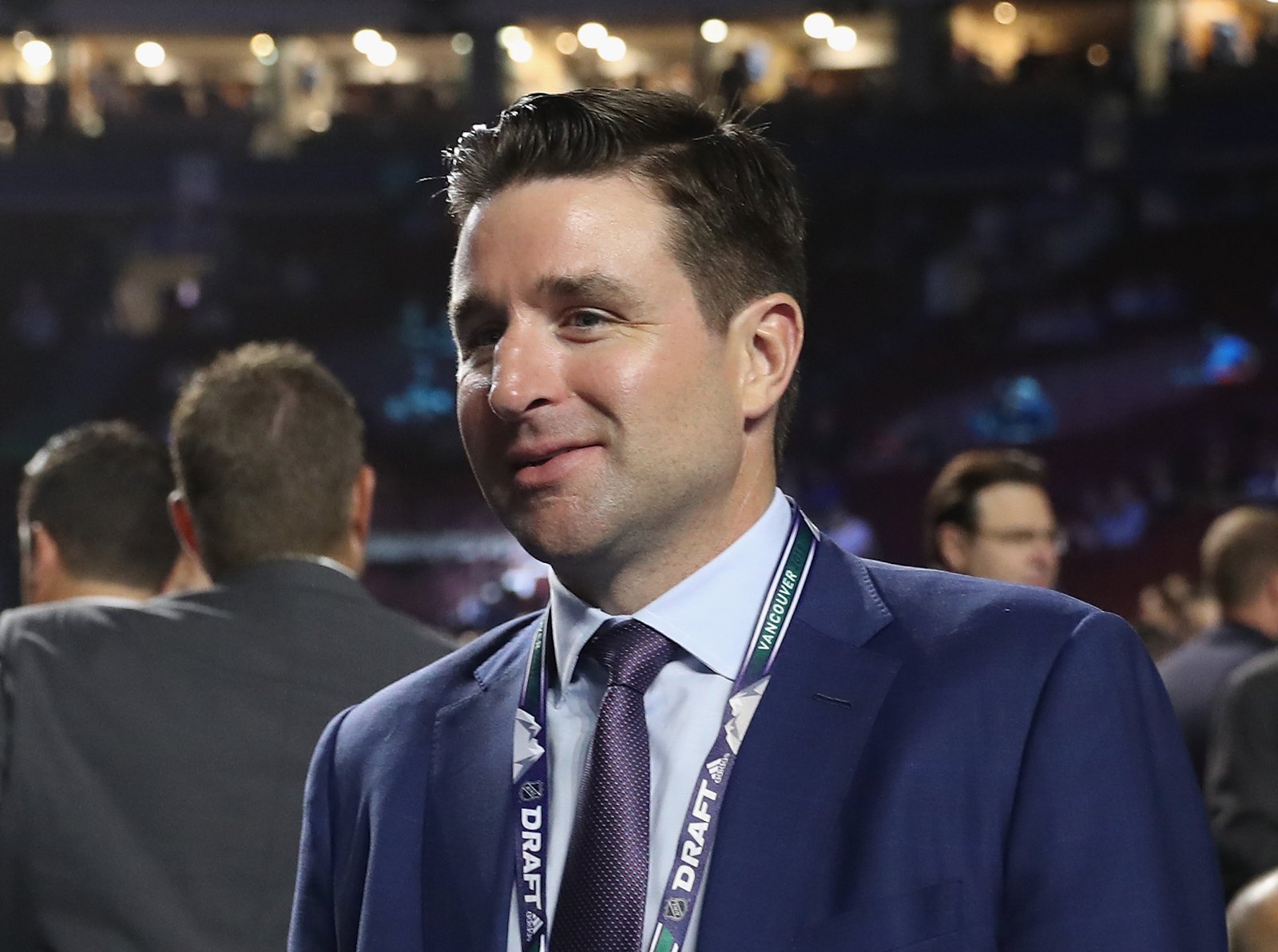Chris Drury may not be holding the stick, but his fingerprints are all over the wreckage. As the Rangers limp into another disappointing spring, the heat is rising on a man who once seemed like the franchise’s steadying force. There’s no formal word of his dismissal — not yet — but the air around Madison Square Garden is thick with expectation. Patience is thinning. So is the margin for error.
When Drury took over in May 2021, the vision was clear — or at least it felt that way. Armed with a talented young core and a generational goaltender, Drury was handed the keys to a Ferrari. But in his effort to retool on the fly, he’s looked more like someone spinning the tires in the mud. Big swings, questionable fits, and now, a roster that looks as fragile mentally as it is physically.
The Trouba trade, once defended as a leadership move, now feels like a self-inflicted wound. With a bloated contract and declining play, Trouba is no longer anchoring the blue line — he’s dragging it down. That’s not on Gerard Gallant. That’s not on Peter Laviolette. That’s Drury’s deal, and it’s looking worse with every game Trouba limps through.
Then there’s the question of balance. Too many bottom-sixers playing up, too many kids shuffled like deck chairs, and a blue line built more for punishment than puck movement. For a team with supposed Stanley Cup aspirations, the build often resembles something closer to a middleweight brawler — physical, yes, but perpetually a step behind the speed and precision of elite contenders.
And what about the deadline? While Eastern rivals loaded up, Drury stood pat. Maybe he believed in the group. Maybe he didn’t like the market. Either way, doing nothing was its own kind of statement — and one that backfired. When the lights got brighter, the Rangers shrank. Again. And the silence from the front office was deafening.
This isn’t just about one bad series or one misjudged trade. It’s about a pattern. Drury has now had multiple years, multiple coaches, and multiple windows to get this right. What’s left is a team good enough to make noise but not enough to win when it counts. The narrative that they’re “close” is getting harder to sell, especially to a fanbase that’s been sold patience for two decades.
Yes, injuries happened. Yes, stars underperformed. But accountability in a results business has to start at the top. Igor Shesterkin can’t bail you out forever. Artemi Panarin can’t always carry the scoring load. And when depth fails, chemistry falters, and the same postseason script plays out — someone eventually has to answer for that.
Drury may survive the summer, if only because ownership isn’t eager to admit another misfire. But make no mistake: the runway is gone. There’s no more benefit of the doubt. Every move from here on out will be scrutinized. Every miss could be fatal to his tenure.
The irony is that Drury, once lauded for his competitive instincts and quiet leadership, now finds himself in a position where silence is his worst enemy. The team lacks identity, lacks hunger, and most alarmingly, lacks direction. It reflects a GM who, despite his pedigree, hasn’t given this group a map to follow — just vague ambition.
In a league where the difference between contender and pretender is often one or two bold decisions, Drury’s cautious approach has started to look like indecision. And indecision is deadly when you’re chasing a Cup.
So what now? If the mandate is truly to win, not just compete, then this offseason is Drury’s crucible. Rework the core, make hard decisions, find the urgency this team seems to lack. Or don’t — and risk being remembered not as a builder, but as the man who let the window slam shut.
Because if the walls aren’t closing in yet, the chill in the room says it all: Chris Drury is officially on thin ice.
